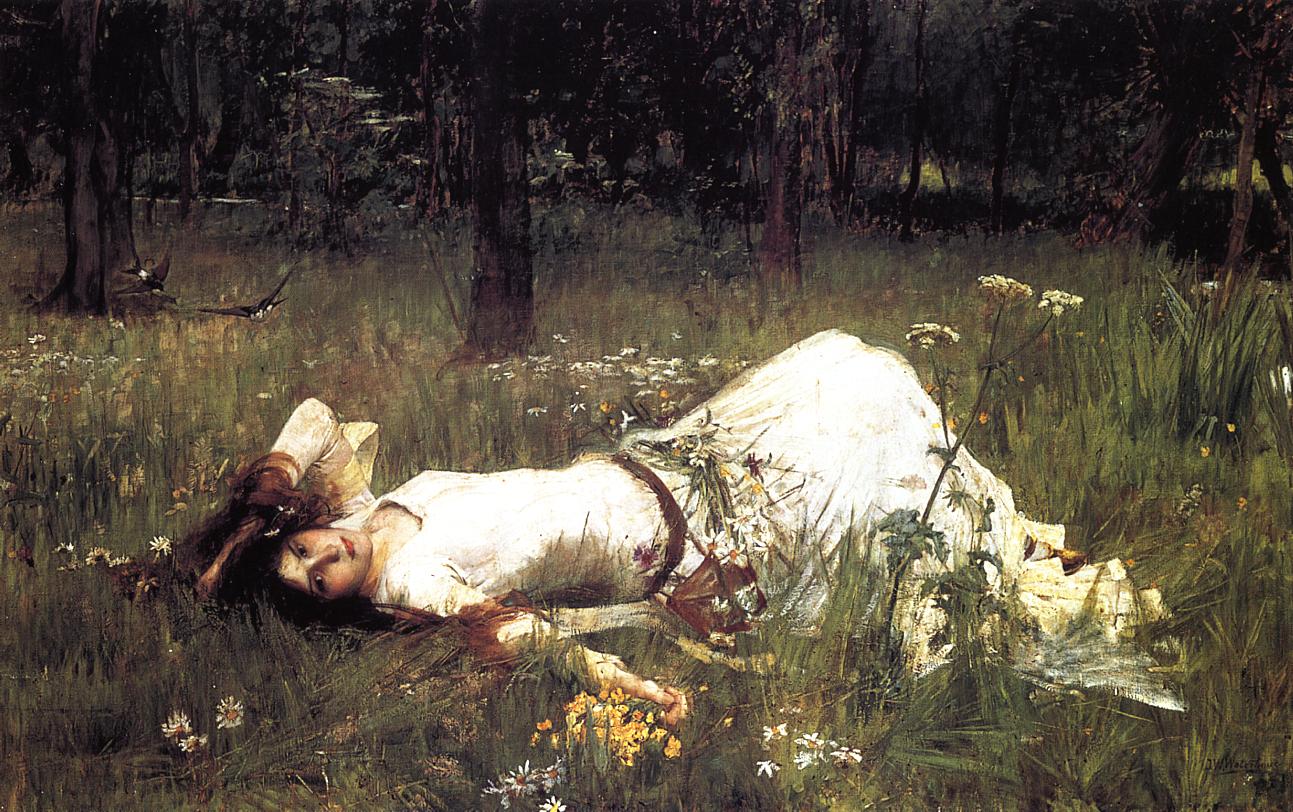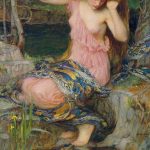
John William Waterhouse’s “Ophelia” is a poignant and evocative painting that stands as a testament to the artist’s mastery of the Pre-Raphaelite style and his ability to capture both beauty and melancholy. Created in 1889, this piece is a reinterpretation of the tragic character Ophelia from William Shakespeare’s play “Hamlet.”
In this painting, Waterhouse presents Ophelia in a serene and dreamlike state as she floats on the water’s surface. The scene is infused with a sense of quietude and introspection, capturing a moment of peaceful repose amidst the tragedy that unfolds in Shakespeare’s narrative. Ophelia’s eyes are closed, her hands delicately arranged among the floating flowers, conveying a sense of surrender to the natural elements that surround her.
Love of Nature
Waterhouse’s attention to detail is evident in the meticulously rendered flora that envelops Ophelia. Each flower is depicted with botanical accuracy, contributing to the overall visual richness of the composition. The artist’s fascination with nature, a characteristic often found in Pre-Raphaelite works, is evident in the way he brings the outdoor environment to life with vivid colors and intricate details.
The choice of the Ophelia theme reflects a broader fascination with literary and mythological subjects that characterized Waterhouse’s oeuvre. The Pre-Raphaelite Brotherhood, to which Waterhouse was associated in spirit, sought inspiration in pre-modern art and literature, rejecting the conventions of academic art. “Ophelia” aligns with this movement’s principles, as Waterhouse revisits a classic literary character and infuses it with his own artistic interpretation.
The romantic undertones in Waterhouse’s “Ophelia” are palpable. The painting captures a sense of ethereal beauty that transcends the tragic narrative of Shakespeare’s play. Ophelia’s connection to nature, symbolized by the flowers surrounding her, suggests a harmonious relationship between the human spirit and the natural world. Waterhouse often depicted strong, beautiful women in his works, and “Ophelia” is no exception, showcasing the artist’s fascination with the female form and its emotive potential.
Mastery of Light
The painting’s composition and use of light contribute to its overall emotional impact. The play of light on Ophelia’s figure and the water’s surface enhances the dreamlike quality of the scene, creating an otherworldly atmosphere. The subdued yet harmonious color palette adds to the sense of quiet beauty and introspection that defines the painting.
“Ophelia” remains one of John William Waterhouse’s most celebrated works, admired for its artistic brilliance and emotional resonance. The painting captures a delicate balance between tragedy and beauty, inviting viewers to reflect on the fragility of life and the transient nature of human existence. Waterhouse’s interpretation of Ophelia continues to captivate art enthusiasts, serving as a timeless representation of the enduring power of classical themes reimagined through the lens of a masterful artist.






